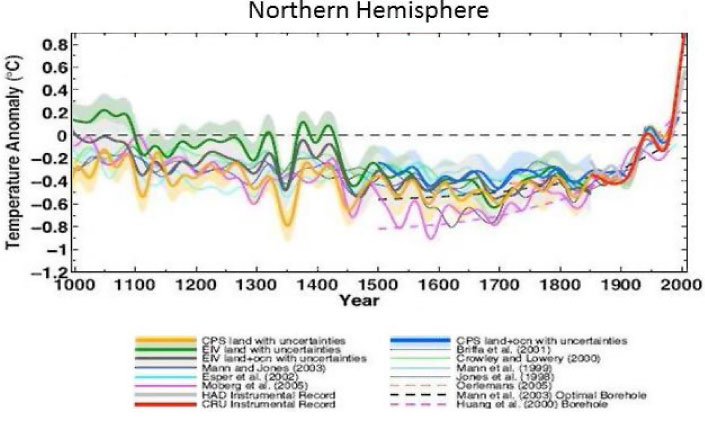Reconstructing the Past to Inform the Future
“The farther back you can look, the farther forward you are likely to see.” –Winston Churchill
Probing the History of Climate Change
Instrumental measurements are useful to study recent climate change, but there are few records before 1850. To understand climate change over a longer timescale, scientists study physical evidence that is recorded in nature. Tree-rings, glacial ice cores, corals, stalactites, geoducks, lake and sea floor sediment cores, and forests buried by glaciers provide physical evidence of historical environmental conditions. These “proxy” records are used to reconstruct past climate conditions. Local proxies that have been recovered from Skagit basin include lake cores and glacially buried forests.
Climate Change in the Past 2,000 years
Multiple temperature reconstructions have been created using a variety of physical climate proxies. Temperature reconstructions (Figure 1) demonstrate temperatures in the Northern Hemisphere today are warmer than they’ve been for at least 2,000 years.

